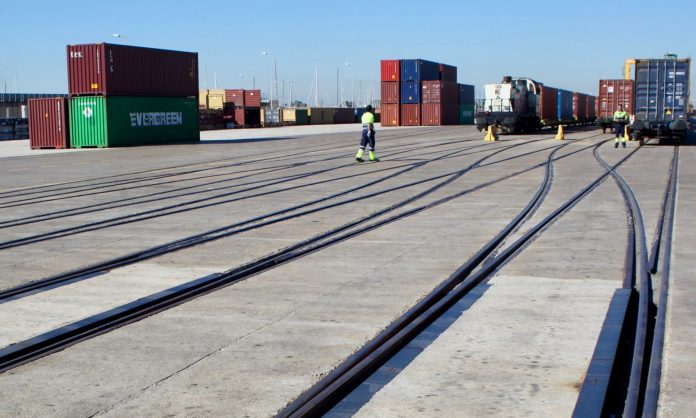
The Port Authority of Valencia (PAV) will invest US$277.6 million (240€ million) in the ports of Valencia and Sagunto to enhance their railway connections.
“We are approaching the railway closer to the companies so that containers travel by this means of transport,” said the president of the Port Authority of Valencia (PAV), Aurelio Martínez, who also stated that this investment will allow the Port of Valencia to be the first in commercial relations via rail with Madrid, to have more transport volume and to consolidate its position “as the leading port in Spain.”
Europe’s fifth-busiest port is investing in internal infrastructures to adapt the ports of Sagunto and Valencia to the railway network and connections at a national level while improving the Valencia-Teruel-Zaragoza line.
“We are supporting the facilities and the line between Sagunto-Teruel-Zaragoza with the construction of sidings and other initiatives, such as the Vicálvaro Intermodal Station or the railway motorway linking the port of Valencia with Madrid,” noted the president of PAV.
To favour the railway accessibility to the Port of Valencia, more than US$145.2 million (125.5€ million) are planned for works such as the remodelling of the railway beach of the Príncipe Felipe quay, the reform of the railway network between the Poniente and Costa quays or the railway access to the terminal.
In the case of Sagunto, almost US$113 million (97.6€ million) will be allocated for improvements on the internal network and access to the port area.
Martínez added, “It [the railway] is more environmentally sustainable, it decongests roads and it is efficient for the transport of goods in specific distances as from 300 kilometres.”
Most European countries have freight transport rates by train above 20% and in Spain, the rate is at 4.5%, according to the Port Authority’s statistics.
Inmaculada Rodríguez Piñero, Member of the European Parliament, stated that ports have to get freight on the train. “We cannot meet the objectives of the Green Pact if freight transport is not carried out by the most efficient and cleanest means,” he said.
According to data from the APV Statistical Bulletin, between January and September, the container volumes handled by rail exceeded 164,050TEU, representing an increase of 12%, while tonnes of goods that were moved by rail reached more than 2.25 million, showing a growth of 18.4% over the same period in 2020.
Recently, Valenciaport has also signed an agreement with Administrador de Infraestructuras Ferroviarias (ADIF) and the company Tramesa, for the first Iberian gauge rail motorway linking Valencia and Madrid, an infrastructure that will carry special wagons allowing a crane to pick up the lorry platform, lift it and place it in a wagon adapted to lorries.
According to the Spanish port, its commitment to the railway has already led 160,000 containers to stop using the road and to be transported by rail to Madrid, which represents 80% of this traffic.








